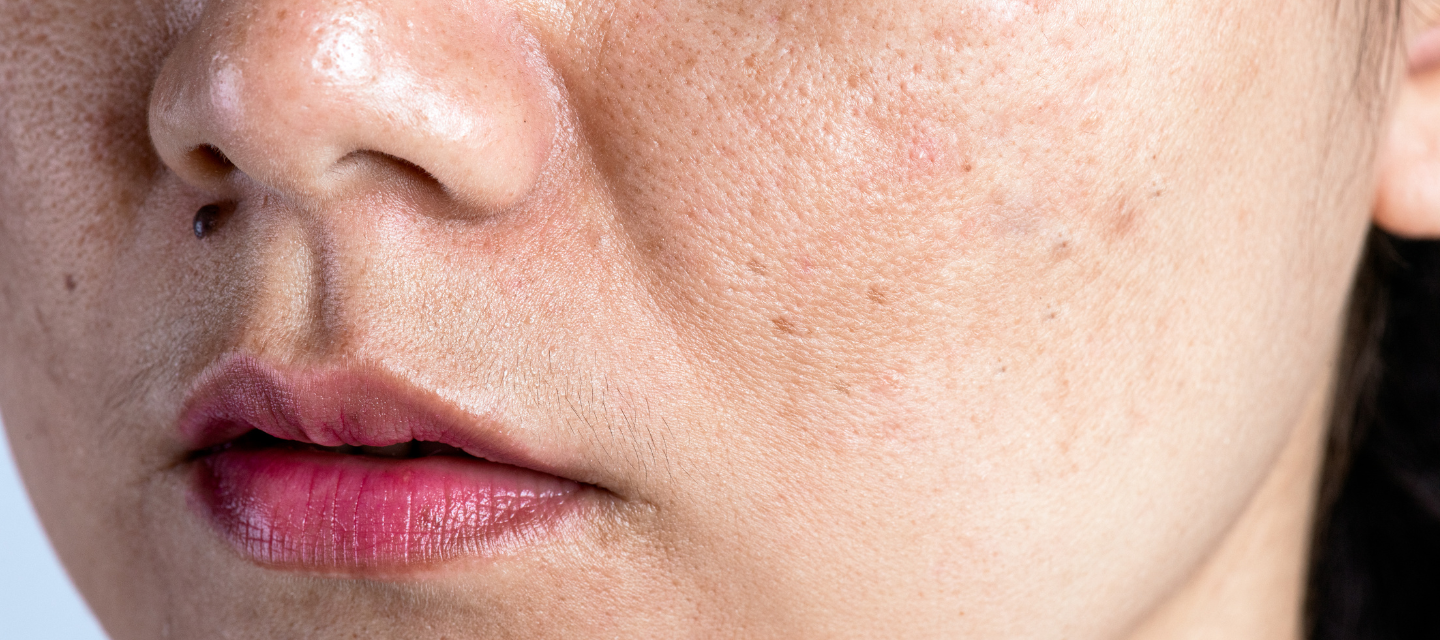
What is WATP?
Your skin has a language all its own. Every breakout, rough patch, or fine line is more than just a surface issue. It's your skin’s way of saying, “Here’s what I need.”
At LuluLab, we’re here to help you listen to those signals with care, not confusion. That’s why we created the LuluTI (Skin Code) to make it easier for you to understand what your skin is trying to tell you and how you can support it.
If your AI skin analysis result came back as WATP, you're not alone. Many people see this combination, and it's simply your skin’s unique way of asking for attention in a few key areas.
Understanding Your Skin Type: WATP
W = Wrinkles
Why it matters:
Wrinkles are a natural part of skin maturing over time. It can appear from facial movements or weaker muscles in younger skin. In mature skin, they often result from slower regeneration that reduces collagen and elastin. Other possible factors include:
→ Frequent pollution or sun exposure
→ A decrease in collagen and elastin
→ Lack of hydration
→ Exposure to pollution or daily stress
What your skin might be telling you...
Your skin needs gentle support to stay smooth and resilient. Wrinkles indicate it could benefit from ingredients that boost collagen and improve skin renewal.
A = Acne
Why it matters:
Acne happens when pores become clogged with oil, dead skin, or debris. Hormonal changes, inflammation, and a weakened barrier can contribute. It can still occur due to:
→ Hormonal shifts
→ Oily skin from excess sebum
→ Dry skin with dead cell buildup
→ Environmental pollutants or physical irritation
What your skin might be telling you...
Gentle care and support. Instead of strong or drying treatments, your skin might need soothing ingredients that calm inflammation, restore the barrier, and help keep pores clear. With the right routine, you can give your skin the space to heal and thrive.
T = Texture
Why it matters:
Enlarged pores can result from different factors depending on age. In younger skin, they are often caused by excess sebum and inflammation from acne. In mature skin, they may appear larger due to a loss of elasticity. Other possible factors include:
→ Chronic inflammation
→ Weakened skin barrier
→ Past breakouts and scarring
What your skin might be telling you...
Rough texture or uneven tone may be your skin’s way of asking for gentle exfoliation and barrier-repairing nourishment. With steady, thoughtful care, it can become softer, smoother, and more balanced, without unnecessary irritation.
P = Pigmentation
Why it matters:
Pigmentation can appear as dark spots, uneven tone, freckles, or marks after acne. In younger skin, it often shows as freckles or post-acne marks. As skin changes over time, age spots may appear alongside acne marks, and both are common. They may be caused by:
→ Sun exposure
→ Inflammation
→ Hormonal changes
→ Melanin overproduction
What your skin might be telling you…
Pigmentation often fades gradually, and your skin may be urging you to keep going. Gentle brightening ingredients, deeply hydrating formulas, and daily sun protection can help restore its clarity while preventing new spots from appearing.
The WATP Connection: How Each Trait Influences the Other
WATP skin often shows overlap between traits. For example, acne can leave pigmentation, enlarged pores can become more visible with wrinkles, and dryness from anti-aging products can trigger more breakouts. These are not fixed rules, but common patterns seen in similar skin types.
LuluTI | What it means | What helps |
|---|---|---|
W-T: Wrinkles with enlarged pores | Loss of elasticity and collagen can make pores look bigger, while aging and oil build-up roughen texture. | Focus on firming and hydrating treatments that support collagen and smooth texture. |
W-P: Wrinkles and pigmentation | Pigmentation often develops with aging or with healing from inflammation and may appear alongside wrinkles, though individual factors vary. | Combine sun protection with collagen support and brightening ingredients to improve tone and texture. |
A-T: Acne and enlarged pores | Pores can become enlarged possibly because of inflammation linked to acne, but other causes might also contribute. | Calm inflammation with soothing ingredients and keep pores clear with gentle cleansing and oil control. |
A-P: Acne and pigmentation | Pigmentation may show up as dark spots from healing inflammation caused by acne, though sun exposure and other factors can play a role. | Apply anti-inflammatory care, daily sun protection, and gentle brightening ingredients to help fade marks over time. |
Understanding how these traits interact can help you choose the right care for your skin’s unique needs. With a balanced and gentle approach, you can support your skin’s health and improve its overall appearance.

